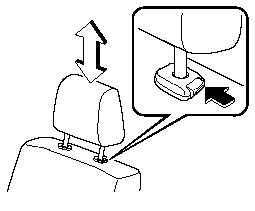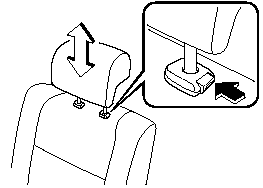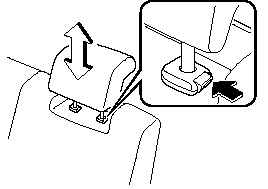Head Restraints
Head restraints are intended to help protect you and the passengers from neck injury.
WARNING.
Always drive with the head restraints
installed when seats are being used
and make sure they are properly
adjusted:
Driving with the head restraints
adjusted too low or removed is
dangerous. With no support behind
your head, your neck could be
seriously injured in a collision.
Height adjustment
To raise a head restraint, pull it up to the desired position.
To lower the head restraint, press the stopcatch release, then push the head restraint down.
Adjust the head restraint so that the top is even with the top of the passenger's ears, never the passenger's neck to prevent injury.

Front seat

Second-Row seat

Third-Row seat
Removal/Installation
To remove the head restraint, pull it up while pressing the stop-catch.
To install the head restraint, press the uprights into the holes while pressing the stop-catch.
WARNING.
Always drive with the head restraints set up when seats are being used and make sure they are properly set up: Driving with the head restraints not set up is dangerous. With no support behind your head, your neck could be seriously injured in a collision.
See also:
Personalization Features
The following “Personalization Features” are possible. These settings can
only be changed by an Authorized
Mazda Dealer.
The following “Personalization Features” can be changed by customer.
...
Introduction
Be extremely careful and prevent injury to yourself and others or damage to
your vehicle
when using this manual for inspection and maintenance.
If you're unsure about any procedure it describes, w ...
Washer Fluid
InspectingWasher Fluid Level
WARNING:
Use only windshield washer fluid or
plain water in the reservoir:
Using radiator antifreeze as washer
fluid is dangerous. If sprayed on the
windshield, it w ...


